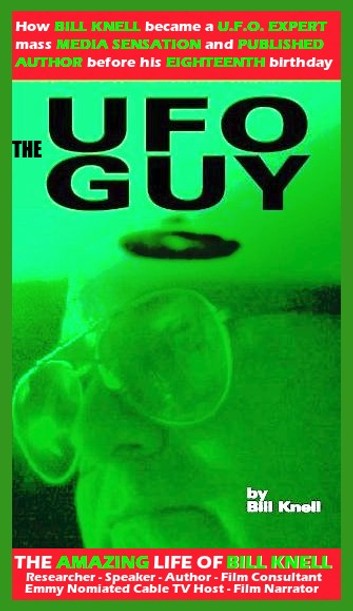|

Back in 1998 I unleashed a firestorm on the world wide web by meticulously placing an article written about the Grand Canyon in 1909 on my website. It generated more email on the subject then anyone else I had ever chosen to comment on or cover. That"s because the Phoenix Gazette article revealed the existence of a grand secret in the nation"s most famous canyon.
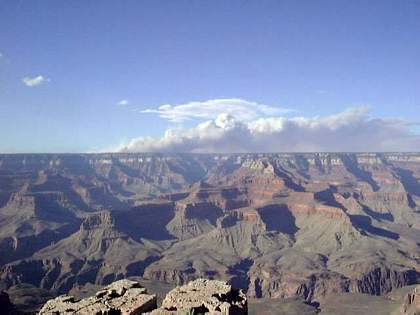
The best way to describe the situation is to allow it to describe itself. Here is the unabridged article just as it appeared in the Phoenix Gazette on April 5, 1909:
Remarkable Finds Indicate Ancient People Migrated From Orient: The latest news of the progress of the explorations or what is now regarded by scientists as not only the oldest archaeological discovery in the United States, but one of the most valuable in the world, which was mentioned some time ago in the Gazette (see photo at left), was brought to the city yesterday by G.E. Kinkaid, the explorer who found the great underground citadel of the Grand Canyon during a trip from Green River, Wyoming, down the Colorado, in a wooden boat, to Yuma, several months ago. According to the story related to the Gazette by Mr. Kinkaid, the archaeologists of the Smithsonian Institute, which is financing the expeditions, have made discoveries which almost conclusively prove that the race which inhabited this mysterious cavern, hewn in solid rock by human hands, was of oriental origin, possibly from Egypt, tracing back to Ramses. If their theories are borne out by the translation of the tablets engraved with hieroglyphics, the mystery of the prehistoric peoples of North America, their ancient arts, who they were and whence they came will be solved. Egypt and the Nile, and Arizona and the Colorado will be linked by a historical chain running back to ages, which staggers the wildest fancy of the fictionist. Under the direction of Professor S.A. Jordan, the Smithsonian Institute is now prosecuting the most thorough explorations, which will be continued until the last link in the chain is forged. Nearly a mile underground, about 1480 feet below the surface, the long main passage has been delved into, to find another mammoth chamber from which radiates scores of passageways, like the spokes of a wheel. Several hundred rooms have been discovered, reached by passageways running from the main passage, one of them having been explored are 854 feet and another 634 feet. The recent finds include articles, which have never been known as native to this country and doubtless they had their origin in the orient. War weapons, copper instruments, sharp - edged and hard as steel, indicate the high state of civilization reached by these strange people. So interested have the scientists become that preparations are being made to equip the camp for extensive studies, and the force will be increased to thirty or forty persons. "Before going further into the cavern, better facilities for lighting will have to be installed, for the darkness is dense and quite impenetrable for the average flashlight. In order to avoid being lost, wires are being strung from the entrance to all passageways leading directly to large chambers. How far this cavern extends no one can guess, but it is now the belief of many that what has already been explored is merely the "barracks", to use an American term, for the soldiers, and that far into the underworld will be found the main communal dwellings of the families. The perfect ventilation of the cavern, the steady draught that blows through, indicates that it has another outlet to the surface." Mr. Kinkaid was the first white child born in Idaho and has been an explorer and hunter all his life, thirty years having been in the service of the Smithsonian Institute. Even briefly recounted, his history sounds fabulous, almost grotesque: "First, I would impress that the cavern is nearly inaccessible. The entrance is 1,486 feet down the sheer canyon wall. It is located on government land and no visitor will be allowed there under penalty of trespass." The scientist"s wish to work unmolested, without fear of the archaeological discoveries being disturbed by curio or relic hunters. A trip there would be fruitless, and the visitor would be sent on his way. "The story of how I found the cavern has been related, but in a paragraph: I was journeying down the Colorado River in a boat, alone, looking for minerals. Some forty two miles up the river from the El Tovar Crystal canyon, I saw on the east wall, stains in the sedimentary formation about 2,000 feet above the river bed. There was no trail to this point, but I finally reached it with great difficulty. Above a shelf, which hid it from view from the river, was the mouth of the cave." "There are steps leading from this entrance some thirty yards to what was, at the time the cavern was inhabited, the level of the river. When I saw the chisel marks on the wall inside the entrance, I became interested, securing my gun and went in." "During that trip, I went back several hundred feet along the main passage till I came to the crypt in which I discovered the mummies. One of these I stood up and photographed by flashlight. I gathered a number of relics, which I carried down the Colorado to Yuma, from whence I shipped them to Washington with details of the discovery. Following this, the explorations were undertaken." "The main passageway is about 12 feet wide, narrowing to nine feet toward the farther end. About 57 feet from the entrance, the first side-passages branch off to the right and left, along which, on both sides, are a number of rooms about the size of ordinary living rooms of today, though some are 30 by 40 feet square. These are entered by oval-shaped doors and are ventilated by round air spaces through the walls into the passages. The walls are about three feet six inches in thickness. The passages are chiseled or hewn as straight as could be laid out by an engineer. The ceilings of many of the rooms converge to a center." "The side-passages near the entrance run at a sharp angle from the main hall, but toward the rear, they gradually reach a right angle in direction." THE SHRINE "Over a hundred feet from the entrance is the cross-hall, several hundred feet long in which is found the idol, or image, of the people"s god, sitting cross-legged, with lotus flower or lily in each hand. The cast of the face is oriental, the carving shows a skillful hand, and the entire object is remarkably well preserved, as is everything in this cavern." "The idol almost resembles Buddha, though the scientists are not certain as to what religious worship it represents. Taking into consideration everything found thus far, it is possible that this worship most resembles the ancient people of Tibet." "Surrounding this idol are smaller images, some very beautiful in form; others crooked-necked and distorted shapes, symbolical probably, of good and evil. There are two large cactus with protruding arms, one on each side of the dais on which the God squats. All this is carved out of hard rock resembling marble. In the opposite corner of this cross-hall were found tools of all descriptions, made of copper." "These people undoubtedly knew the lost art of hardening this metal, which has been sought by chemists for centuries without result. On a bench running around the workroom was some charcoal and other material probably used in the process. There is also slag and stuff similar to matte, showing that these ancients smelted ores, but so far, no trace of where or how this was done has been discovered, nor the origin of the ore." "Among the other finds are vases or urns and cups of copper and gold, made very artistic in design. The pottery work includes enameled ware and glazed vessels. Another passageway leads to granaries such as are found in the oriental temples. They contain seeds of various kinds. One very large storehouse has not yet been entered, as it is twelve feet high and can be reached only from above. Two copper hooks extend on the edge, which indicates that some sort of ladder was attached. These grannies are rounded, as the materials of which they are constructed, I think is a very hard cement. A Gray metal is also found in this cavern, which puzzles the scientists, for its identity has not been established. It resembles platinum." "Strewn promiscuously over the floor everywhere are what people call "cats eyes," a yellow stone of no great value. Each one is engraved with the head of the Malay type." THE HIEROGLYPHICS "On all the urns, or walls over doorways, and tablets of stone which were found by the image are the mysterious hieroglyphics, the key to which the Smithsonian Institute hopes yet to discover. The engraving on the tablets probably has something to do with the religion of the people. Similar hieroglyphics have been found in southern Arizona. Among the pictorial writings, only two animals are found. One is of prehistoric type." THE CRYPT "The tomb or crypt in which the mummies were found is one of the largest of the chambers, the walls slanting back at an angle of about 35 degrees. On these are tiers of mummies, each one occupying a separate hewn shelf. At the bead of each is a small bench, on which is found copper cups and pieces of broken swords. Some of the mummies are covered with clay, and all are wrapped in a bark fabric. The urns or cups on the lower tiers are crude, while as the higher shelves are reached, the urns are finer in design, showing a later stage of civilization." "It is worthy of note that all the mummies examined so far have proved to be male, no children or females being buried here. This leads to the belief that this exterior section was the warriors" barracks. Among the discoveries, no bones of animals have been found, no skins, no clothing, no bedding. Many of the rooms are bare but for water vessels. One room, about 40 by 700 feet, was probably the main dining hall, for cooking utensils are found here." "What these people lived on is a problem, though it is presumed that they came south in the winter and farmed in the valleys, going back north in the summer. Upwards of 50,000 people could have lived in the caverns comfortably. One theory is that the present Indian tribes found in Arizona are descendants of the serfs or slaves of the people, which inhabited the cave. Undoubtedly a good many thousand of years before the Christian era a people lived here which reached a high stage of civilization. The chronology of human history is full of gaps." Professor Jordan much enthused over the discoveries and believes that the find will prove of incalculable value in archaeological work. "One thing I have not spoken of, may be of interest. There is one chamber, the passageway to which is not ventilated, and when we approached it a deadly, snaky smell struck us. Our light would not penetrate the gloom, and until stronger ones are available, we will not know what the chamber contains. Some say snakes, but other boo-hoo"d this idea and think it may contain a deadly gas or chemicals used by the ancients. No sounds are heard, but it smells snaky just the same." "The whole underground installation gives one of shaky nerves the creeps. The gloom is like a weight on one"s shoulders, and our flashlights and candles only make the darkness blacker. Imagination can revel in conjectures and ungodly daydreams back through the ages that have elapsed till the mind reels dizzily in space." AN INDIAN LEGEND In connection with this story, it is notable that among the Hopi Indians the tradition is told that their ancestors once lived in an underworld in the Grand Canyon till dissension arose between the good and the bad, the people of one heart and people of two hearts. Machetto, who was their chief, counseled them to leave the under world, but there was no way out. The chief then caused a tree to grow up and pierce the roof of the underworld, and then the people of one heart climbed out. They tarried by Paisisvai (Red River), which is the Colorado, and grew grain and corn. They sent out a message to the Temple of the Sun, asking the blessing of peace, good will and rain for people of one heart. That messenger never returned, but today at the Hopi villages at sundown can be seen the old men of the tribe out on the housetops gazing toward the sun, looking for the messenger. When he returns, their lands and ancient dwelling place will be restored to them. That is the tradition. Among the engravings of animals in the cave is seen the image of a heart over the spot where it is located. The legend was learned by W.E. Rollins the artist, during a year spent with the Hopi Indians. There are two theories of the origin of the Egyptians. One is that they came from Asia; another that the racial cradle was in the upper Nile region. Heeren, an Egyptologist, believed in the Indian origin of the Egyptians. The discoveries in the Grand Canyon may throw further light on human evolution and prehistoric ages.
At the start of the article a previous piece is mentioned. That article has also been located and briefly describes Kincaid"s arrival in Yuma and his preparations for the expedition. Both articles have long been a thorn in the side of the Smithsonian. They claim no knowledge of the expedition or any materials retrieved from it. In 1998 a spokesperson for the Smithsonian wrote me a letter in response to my inquiry stating: "We know of no credible evidence that supports the discovery of ancient Egyptian artifacts or hieroglyphs anywhere in the Americas." But there are problems with their denials. What are clearly rock carvings with distinctly Egyptian hieroglyphs on them have been discovered in several areas of the Grand Canyon. I have tried to get subsequent comments from the Smithsonian, but have simply received an email stating that they stand by their original statements.
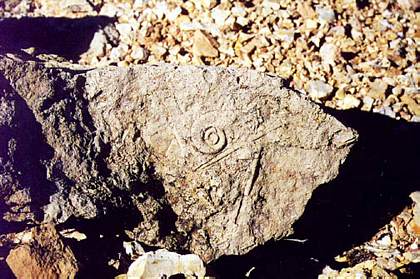
Whenever any type of discovery seems to interfere with the scientific status quo, it"s ignored. Proof of this can be seen in the development of Alexander Graham Bell"s telephone. A number of serious scientists and engineers of his day freely exclaimed their doubts that such an invention would be feasible, or too complicated and expensive to develop. Other prominent scientific figures worried about the health effects of such a device, claiming it would likely lead to deafness. Most of the exposing views came from people hired to render them by telegraph companies and competitors. The same is true today. Some of these scientists also stated that people traveling in mechanical vehicles would probably die if the speeds reached surpassed sixty miles per hour. There are a number of prominent Archeologists who have lined up against the gazette article and hieroglyphs as fakes. But there are far more positives then negatives in terms of evidence. Although the fabulous finds from the Grand Canyon caves were supposed to be described and exhibited by the Smithsonian, it never happened. Instead, further attempts to explore that part of the canyon were stopped. Federal authorities decided to make it off limits to exploration. Although conservation was given as one of the reasons, the restricted area was suspiciously limited to the same where the cave was discovered. I have received a few references to letters or articles (but not the original documents) in private collections by people who have attended my seminars in Phoenix that claim a late 1930"s attempt was made to re-visit the cave. It seems that a man named Johnson located one of the original expedition members who was still alive and living in Phoenix. The un-named man drew maps and helped Johnson to locate the cave area which, at that time, was not known to be in a restricted location. Johnson found that tons of rock had been dumped or placed at three possible entrances to the cave and seemed to extend well into it. Lacking the manpower, machines or funding necessary to go further, he gave up his quest but was sure he had located the cave. One of the most interesting stories that came from the un-named member of the original expedition was that twenty ceremonial daggers were discovered in the cave. The daggers are not mentioned in the article because Kincaid feared their value might be such that serious attempts would be made to steal them. The weapons seemed very light and unusually sharp. The man was given one by Kincaid in lieu of his share of the discoveries. Others received some as well. He kept the dagger for years and marveled how it never seemed to corrode or loose sharpness. Finally, he sold it to an area collector for what he said was "a goodly sum" and lost track of the man. One wonders what the dagger was made of? What was found in that cave that so disturbed the government? Surely the mere existence of proof that Egyptians or Phoenicians may have visited the ancient Americas would not be reason enough to cover up such a monumental discovery? But there may have been other forces at work. Like Utah and other parts of the Southwest, Arizona has always had a large population of people that follow the Mormon Faith. The Latter-Day Saints have long claimed that a great ancient civilization predated and existed before the Native Americans of North America. Considering the long-standing animosity between Mormons and the Government, it would not be impossible to believe that federal authorities would go out of their way to help deny these people physical evidence that might help support their point of view. But that"s not the only possible reason for an archeological cover-up. A short re-reading of the people of one and two hearts mentioned in the 1909 article reveals more things that might concern the Government. Many southwestern native peoples believe their ancestors came here from the skies or that they are somehow related to the stars. Many Hopi"s believe this. It"s possible that some unique material or technology was discovered in those caves of unknown origin that federal authorities did not want to have to share or explain until some future date. And what about the territorial considerations? Always a matter of contention between various tribes and federal authorities, a good case for land claims might have been made by any one or all parties involved based on the cave discoveries. Although not enough of the hieroglyphic writing has been discovered for a translation, similar writing was discovered at a remote location in Australia around the same time that the 1909 Grand Canyon Expedition occurred. Like what was seen in America, the writing was the earliest form of Egyptian Hieroglyphs used by Egyptians, Phoenicians and others. The rock carvings are located in the National Park forest of the Hunter Valley, 100 kilometers north of Sydney in New South Wales. A rough translation of the 250 rock carvings reveals a story of Egyptians that were ship wrecked in Australia between 1779 and 2748 BC, based on the language used and references to King Khufu. A cave where the glyphs were found was likely the gravesite of the group"s leader or commander, whose death is described in the translation.
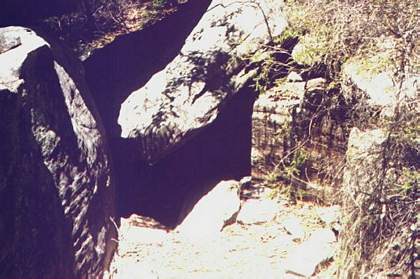
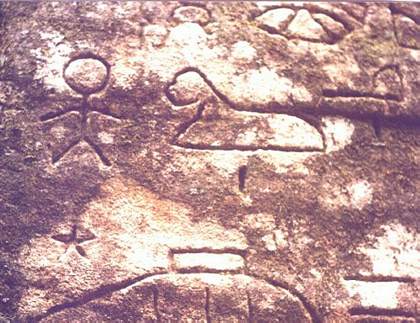
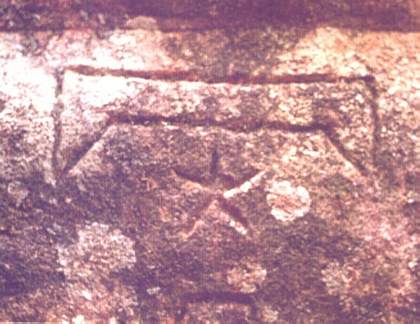

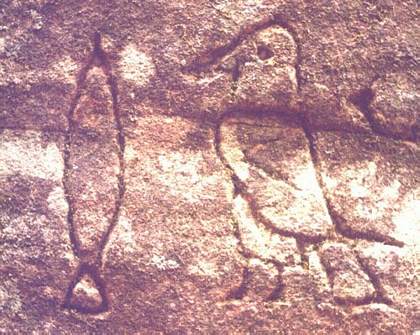
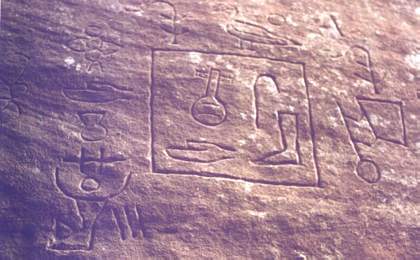
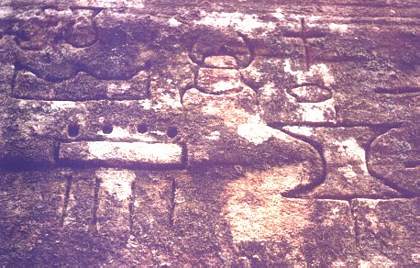
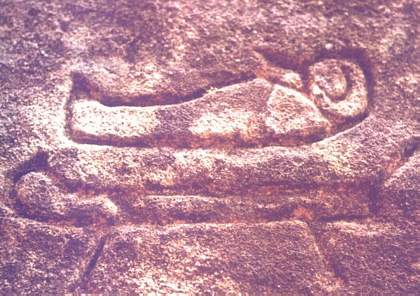
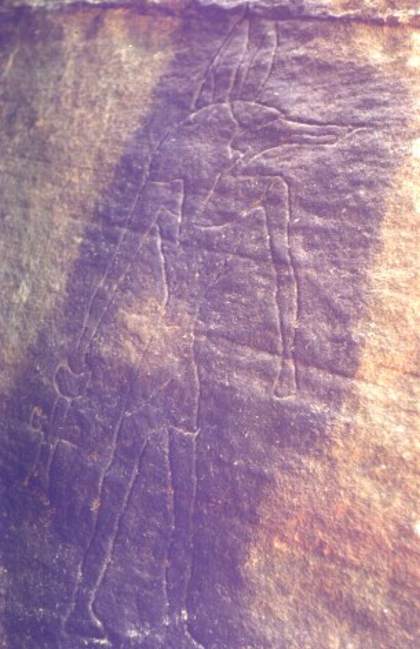
Like the Grand Canyon carvings, many have taken sides against the Aussie glyphs as being fake. This seems odd when you consider the fact that any glyphs found in places where archeologists expect to find them are rarely questioned, despite some often questionable or odd content. In 1991, a weathered tablet discovered by archeologists in the Valley of the Kings was immediately touted as an "important piece of the ancient Egyptian puzzle." A year later it was exposed as a complete hoax planted there in the early part of this century by mischievous and bored archeology students angry at their over-bearing professor in charge of a dig in the valley. Like the Grand Canyon cave discovery, the Aussie hieroglyphs would tend to fuel the fire of claims that Phoenicians or Egyptians may have walked the Americas at a time during or even before Native Americans arrived from the orient over the suspected Siberian Land Bridge. This would create all kinds of political and social problems, perhaps more then governments want to be bothered with. Now it"s my turn! I will not be foolish enough to claim absolutes with evidence that seems good, but very eclectic. Instead, I will play the guessing game with the wildest theory of all. Suppose there is more then one history? Sound crazy? Before you judge, consider the march of scientific discovery. My Grandparents were part of a generation of people that thought the idea of manned flight impossible or impractical. Bishop Wright, Orville and Wilbur Wright"s father, said that if God had meant for man to fly, he would have given him wings! But science, engineering and discovery won out the day. My parents used to laugh at the idea of people flying in space. It was all "Buck Rogers stuff" that belonged strictly in the science fiction realm. In 1969, Neil Armstrong bridged the gap between science fiction and science fact by being the first man to set foot on the moon. Since then, at least half of what we thought we knew about our planets, solar system and universe has changed based on new discoveries. As a kid growing up in the 1960"s, I read books, watched TV shows and went to movies about Time Travel. Like the previously wild ideas of manned flight and trips into space, time travel was a subject relegated to the sci-fi genre, despite impressive suggestions by Einstein and other great minds that it might be possible. Once I started to consider the idea of time travel as a possible reality, I had to settle on a methodology and theoretical explanation. I decided that while time always seems to move forward, that view of things came from a one-sided position of existence experienced by people trapped in a linear time environment. Based on various theories and evidences, I now believe that time is like a circle. Anyone with the technology to do so might choose to visit any part of that circle. That would allow not for the recreation of the past, but the co-existence of it with any point in the future. The problem with visiting any part of the circle is the impact that visit might have on other parts. People visiting the past will impact the future. Whether that impact is preordained or not, it will cause a change. The question is will the change be noticeable to some or all living it, or just equal things out? I have spoke to a number of people through the years that have noticed subtle changes. A house was remembered where there was none. A friend that every one knew was suddenly recalled by just one person. This could be an argument for the existence of multiple histories within the circle. Is time travel mental or physical? One can"t help but read the interpretation of the writings that Nostradamus left us and wonder what window of the future he was able to see through. Others may have had access to that same window. General Billy Mitchell was a strong advocate for the development of military air power by the USA after World War I, despite general disbelief in it as a viable military weapon prior to World War II. Over twenty years before the Japanese attack on Pearl Harbor he told superiors that Nippon interest in air power might cause them to attack Pearl Harbor "early one fine Sunday Morning." He also predicted that one day unmanned drones could replace some manned aircraft for dangerous reconnaissance work. We are seeing this today as the war on terrorism has featured the use of many unmanned aircrafts. If time travel is as physically possible as it may be mentally, anyone with the ability to travel through time would know the risks. The biggest would be to cause enough change so that their own existence would be wiped out or terribly altered. One would assume that time travelers would be extremely careful, no matter what their motivation might be. For this reason, little evidence would be allowed to exist for their journey. But some might just survive. The 1990"s brought attention to an Egyptian bas relief in the Abydos Temple. The relief seems to clearly show a helicopter, jet plane, space craft and dome or house with a microwave antenna on it. The previous characters on the panel show a royal cartouche and the mark of the sun god, along with a designation for the king of upper and lower Egypt. Was this the story of a future time told to a Pharaoh by visitors from that time? Nay Sayers claim the figures exist because of a re-carving of the stone for the purpose of correction, but I see no evidence of that to the extent that it could account for all the modern devices depicted on the relief.


I have many other proofs that time travel may exist at some point in the near future, but will not take the space needed to cover those here. Instead, I will ask you to consider that more may have been found in the Grand Canyon then first suspected. It seems strange that Egyptian explorers (if that"s who they were) would end up so far from any coast in a most inhospitable section of a huge canyon? Unless they ended up or were purposely placed there, by people with the power to do so and for reasons not immediately clear. Has partial eradication of the event already been accomplished by time travelers who might have caused it? If not, where are the artifacts, what ever happened to Kincaid who vanished after the discovery and why is the Smithsonian so adamant about their denials? Although any evidence of the 1909 cave appears to have been effectively dealt with by the government, exploration in caves along the Grand Canyon is still discouraged under the banner of environmentalism and cultural respect. Concerns about disturbing bat populations and native burial sites are the latest excuse used to keep people out. Of course the government makes a nice buck from allowing people from all over the world to walk right over the graves and sacred places of Native Americans at plenty of other Southwest locations and regularly works to clear bats of out various caves needed for their use!
Book Titles We Highly Recommend - Informative and Fascinating - Helps To Support This Website



|




